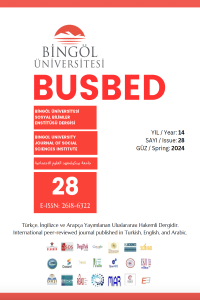‘THE CALL IS COMING FROM INSIDE THE HOUSE’: SURVEYING THE FEAR FACTOR OF STRANGER DANGER THROUGH THE LENS OF NABOKOV’S LOLITA (1955)
Abstract
‘The Call is Coming from inside the House’ trope, emblematic of betrayal, has permeated both visual and written narratives, evoking dread and questioning characters’ innocence. This paper critically explores the fear instilled by the stranger danger narrative, juxtaposing it with Vladimir Nabokov’s Lolita (1955) to underline the insidious nature of domestic abuse. While once a potent social warning, the overuse of the trope has desensitised audiences to domestic violence, rendering it banal. The narrative unpacks how social conditioning perpetuates fear, particularly among women and girls, confining them indoors with potential abusers. Drawing parallels between the narrative of Lolita and real-life instances of grooming and abuse, the paper elucidates how abusers manipulate victims into complicity. By examining Lolita as a lens through which to understand social dynamics, the paper prompts a revaluation of cultural tropes and their implications for gender relations and individual autonomy. Through Humbert Humbert’s manipulation of Lolita’s memories and perceptions, the paper highlights the pervasive control exerted by abusers. The paper advocates for a multilayered understanding of fear and safety, challenging the narratives that perpetuate gender-based violence. It critiques social responses to stranger danger, arguing that they perpetuate victim-blaming culture and fail to address root causes. By unpacking the parallels between the patriarchal culture and grooming tactics, the paper finally exposes the false security offered by domesticity, as in Lolita.
Keywords
Project Number
Gerekmemektedir
References
- About sexual assault. RAINN. https://www.rainn.org/about-sexual-assault
- Brunvand, J. H. (1981). The Vanishing Hitchhiker: American Urban Legends and Their Meanings. W. W. Norton & Company.
- Clover, C. J. (1992). Men, Women, and Chain Saws: Gender in the Modern Horror Film. Princeton University Press.
- Coleman, R. R. M. (2011). Horror Noire: Blacks in American Horror Films from the 1890s to Present. Routledge.
- Ciment, J. (2024). Consent: A Memoir. Pantheon.
- Dodd, V. (2020, February 5). Police uncovering “epidemic of Child abuse” in 1970s and 80s. The Guardian. http://www.theguardian.com/uk-news/2020/feb/05/police-uncovering-epidemic-of-child-abuse-in-1970s-and-80s
- Femicide Epidemic. Sanctuary for Families. https://sanctuaryforfamilies.org/femicide-epidemic/
- Greer, G. (1999). The Whole Women. Doubleday.
- Marx, K. (1977). A Contribution to The Critique of Political Economy. Progress Publishers.
- Mill, J. S. (2008). On the Subjection of Women. Hesperus.
- Nabokov, V. V., & Amis, M. (1993). Lolita. Everyman’s Library.
- Taylor, J. (2020). Why Women are Blamed for Everything: Exploring Victim Blaming of Women Subjected to Violence and Trauma. Constable.
- Vera-Gray, F. (2018). The Right Amount of Panic. Policy Press.
‘EVİN İÇİNDEN GELEN ÇAĞRI’: NABOKOV’UN LOLİTA (1955) ESERİYLE YABANCI TEHDİT KORKU FAKTÖRÜNÜN İNCELENMESİ
Abstract
‘Evin İçinden Gelen Çağrı’ klişesi, ihanetin sembolü olarak görsel ve yazılı anlatılara nüfuz etmiş, korku ve karakterlerin masumiyetini sorgulama duygusunu çağrıştırmıştır. Bu makale, ‘yabancı tehlike’ anlatısının içsel bir tehlikeyi vurgulamasını, özellikle Vladimir Nabokov’un Lolita eseri üzerinden, ev içi istismarın gizil doğasını eleştirel bir bakış açısıyla inceler. Bir zamanlar etkili bir toplumsal uyarı olan bu klişenin aşırı kullanımı, hedef kitleyi ev içi şiddete karşı duyarsızlaştırarak ilgili kavramı sıradanlaştırmıştır. Bu çalışma, özellikle kadınlar ve kız çocukları üzerinde ev içinde potansiyel tacizcilere karşı nasıl bir korku oluşturulduğunu ve bu korkunun onları nasıl ev içinde kısıtladığını incelemektedir. Makale Lolita’nın anlatısı ile gerçek hayattaki kandırma ve istismar vakaları arasında kesişimleri ele alarak, tacizcilerin kurbanlarını iş birliğine zorlayarak nasıl manipüle ettiklerini açıklar. Toplumsal dinamikleri anlamak için bir lens olarak Lolita’yı merkeze alan bu çalışma, kültürel klişeleri ve bunların cinsiyet ilişkileri ile bireysel özerklik üzerindeki etkilerini yeniden değerlendirmeyi amaçlar. Eser karakterlerinden olan Humbert’ın Lolita’nın anılarını ve algılarını sürekli manipüle etmesi, istismarcıların genellikle başvurduğu bir kontrol yöntemini vurgular. Makale, klişeleşmiş cinsiyete dayalı şiddeti sorgulayarak, korku ve güvenlik konularında çok yönlü bir anlayışın toplumsal olarak benimsenmesini önerir. Ataerkil kültür ve kandırma taktikleri arasındaki kesişimleri inceleyen bu çalışma, ev içi yaşamın Vladimir Nabokov’un Lolita adlı eserinde yanlış bir güvenlik algısı ile dayatıldığı sonucuna ulaşır.
Ethical Statement
Gerekmemektedir.
Supporting Institution
Yok.
Project Number
Gerekmemektedir
Thanks
Gerekmemektedir.
References
- About sexual assault. RAINN. https://www.rainn.org/about-sexual-assault
- Brunvand, J. H. (1981). The Vanishing Hitchhiker: American Urban Legends and Their Meanings. W. W. Norton & Company.
- Clover, C. J. (1992). Men, Women, and Chain Saws: Gender in the Modern Horror Film. Princeton University Press.
- Coleman, R. R. M. (2011). Horror Noire: Blacks in American Horror Films from the 1890s to Present. Routledge.
- Ciment, J. (2024). Consent: A Memoir. Pantheon.
- Dodd, V. (2020, February 5). Police uncovering “epidemic of Child abuse” in 1970s and 80s. The Guardian. http://www.theguardian.com/uk-news/2020/feb/05/police-uncovering-epidemic-of-child-abuse-in-1970s-and-80s
- Femicide Epidemic. Sanctuary for Families. https://sanctuaryforfamilies.org/femicide-epidemic/
- Greer, G. (1999). The Whole Women. Doubleday.
- Marx, K. (1977). A Contribution to The Critique of Political Economy. Progress Publishers.
- Mill, J. S. (2008). On the Subjection of Women. Hesperus.
- Nabokov, V. V., & Amis, M. (1993). Lolita. Everyman’s Library.
- Taylor, J. (2020). Why Women are Blamed for Everything: Exploring Victim Blaming of Women Subjected to Violence and Trauma. Constable.
- Vera-Gray, F. (2018). The Right Amount of Panic. Policy Press.
Details
| Primary Language | English |
|---|---|
| Subjects | British and Irish Language, Literature and Culture |
| Journal Section | Articles |
| Authors | |
| Project Number | Gerekmemektedir |
| Early Pub Date | October 27, 2024 |
| Publication Date | October 30, 2024 |
| Submission Date | May 15, 2024 |
| Acceptance Date | September 22, 2024 |
| Published in Issue | Year 2024Issue: 28 |



